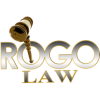
Understanding Club Drugs: Risks and Precautions
Club drugs refer to a variety of substances often encountered in social settings like parties, nightclubs, bars, and concerts. They are typically used for recreational purposes, leading to euphoria but also impairing judgment. Despite their popularity in these environments, most club drugs are illegal and can lead to severe health consequences, including illness, injury, or death, after just one use, repeated usage, or when combined with other substances like alcohol.
Common Types of Club Drugs:
- Flunitrazepam (Roofies)
- GHB (Liquid Ecstasy)
- Ketamine (Special K)
- LSD (Acid)
- MDMA (Ecstasy or Molly)
- Methamphetamine (Meth)
Effects on the Body and Mind: Club drugs can have a profound impact on the brain and central nervous system, often altering perception, mood, and behavior. They can lead to risky behaviors that one might not normally engage in.
- Stimulants increase alertness and energy, leading to feelings of euphoria and decreased inhibition.
- Depressants reduce brain activity, slowing down the functions of the nervous system.
- Hallucinogens distort reality, affecting one’s ability to think, feel, and recognize the real world, sometimes causing memory lapses.
- Methamphetamines, a type of stimulant, induce heightened alertness and energy but can also cause anxiety and paranoia.
The Dangers of Club Drug Use: Even if some individuals choose to use club drugs, they are far from safe. Many of these drugs are addictive, especially those containing methamphetamine, and are often adulterated with dangerous substances. The drugs are sometimes used in committing sexual assaults due to their potent effects at low doses, with GHB and flunitrazepam being notorious as date-rape drugs.
Preventative Measures: It’s crucial to exercise caution to avoid unintentional consumption of club drugs, as they can be colorless, odorless, and tasteless, easily mixed into food and drinks. Young adults, particularly, should be educated about the risks and ways to avoid being drugged, such as not accepting consumables from strangers and keeping an eye on their drinks.
Recognizing and Responding to Drug Use: The effects of club drugs vary by individual, type of drug, and dosage, but common symptoms include drowsiness, dizziness, blurred vision, nausea, and more severe reactions like seizures or coma. Quick recognition and response to these symptoms can be life-saving, especially in situations where overheating or overdose occurs.
Awareness and Reporting: It’s vital to be aware of the various names and forms that club drugs can take and to report any suspicious activity or attempts to distribute these drugs in social settings.
